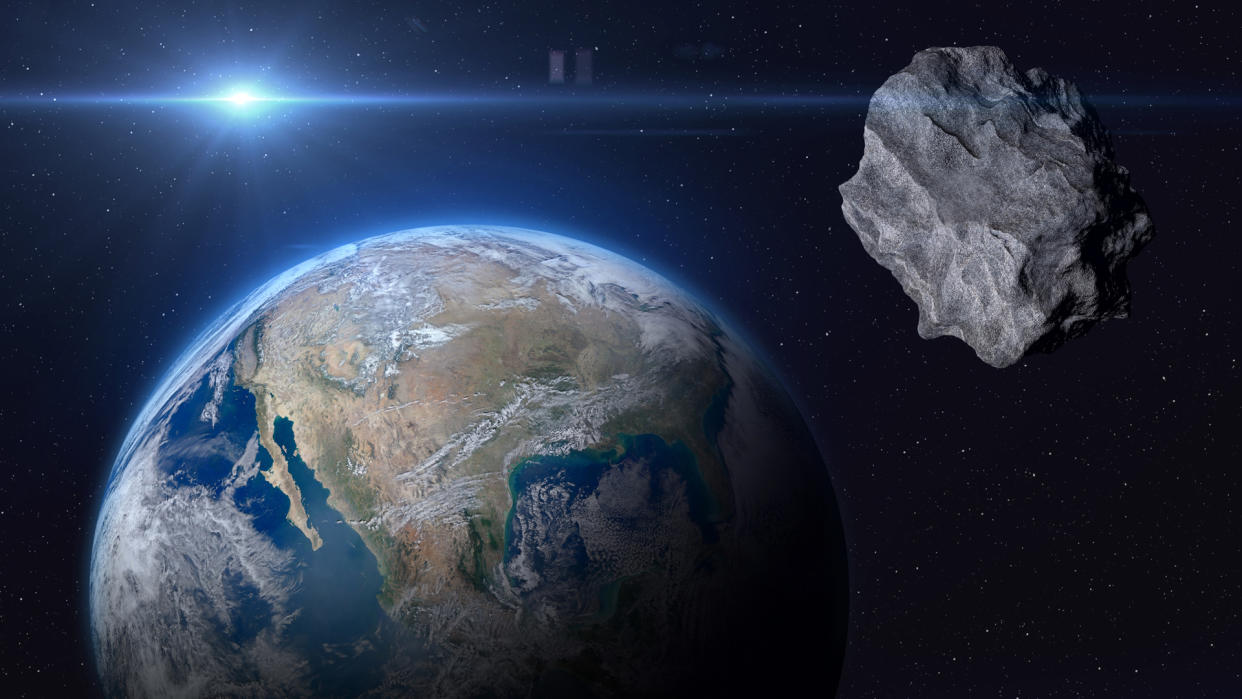4 big asteroids are flying by Earth this week, but don't worry. They aren't getting too close.

- Oops!Something went wrong.Please try again later.
A quartet of large asteroids are zooming by Earth this week, but they'll all pass our planet with millions of miles to spare, according to NASA.
The near-Earth asteroids are all passing within 4.6 million miles (7.5 million kilometers) of our planet — close enough to make NASA's potentially hazardous asteroid (PHA) list — but none will come closer than 2.2 million miles (3.5 million km), according to NASA's weekly chart of asteroid passes.
According to our sister site Livescience, this week's big space rock flybys start with the asteroid 2012 DK31, which measures about 450 feet (137 meters) across — wider than a 40-story skyscraper is tall. It passed within 3 million miles (4.8 million km) of Earth on Monday (Feb. 27). While 2012 DK31's close approach distance meets NASA's PHA requirements, the agency has projected its path for the next 200 years and found it won't pose an impact risk to Earth, Livescience reported.
Related: How big must an asteroid be to end human civilization?
A second big asteroid called 2006 BE55 will fly by Earth today (Feb. 28) and is the one passing within 2.2 million miles of our planet. At 450 feet across, this asteroid is about the same size as 2023 DK31 and takes up to five years to orbit the Earth, according to Livescience.
On Friday (March 3), two more big asteroids will pass the Earth, including the biggest of the week's four close-flying space rocks.
First, there's asteroid 2007 ED125. It's about 700 feet (213 m) across, making it the size of a large football stadium and the largest of the week's asteroid flybys. It will be nearly 2.8 million miles (4.4 million km) from Earth during its flyby, according to NASA. The second large asteroid is 2021 QW, which is 250 feet (76 m) across and will pass within 3.3 million miles (5.3 million km) of Earth.
Related stories:
— Falling asteroid sparks brilliant fireball over Europe just hours after discovery (video)
— Chinese asteroid-detection system enters new phase of construction
— How big is the asteroid threat, really?
There are actually two more asteroids flying by Earth on Friday (March 3), but both are about the size of a large airplane — much smaller than 2007 ED125 and 2021 QW. One, called 2017 BM123, is 190 feet (58 m) wide and will pass within nearly 2.9 million miles (4.6 million km).
The other is a newly discovered asteroid called 2023 DX and will pass within 1.2 million miles (2 million km) of Earth. It was first detected on Monday (Feb. 27), according to NASA.
NASA researchers and other scientists around the world regularly scan the skies for asteroids that may one day pose an impact risk to Earth. Space rocks larger than 492 feet (150 m) with orbits that pass within 4.6 million miles (7.4 million km) of Earth are considered to be potentially hazardous objects.
In addition to observing and tracking asteroids with telescopes, astronomers can use radio antennas like NASA's Goldstone facility with the Deep Space Network to make radar observations of passing space rocks.
Email Tariq Malik at tmalik@space.com or follow him @tariqjmalik. Follow us @Spacedotcom, Facebook and Instagram.

